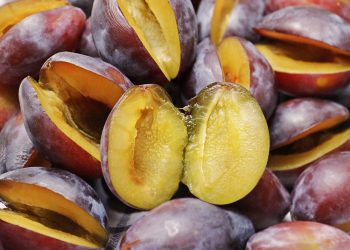Sustainable eating isn’t just a trend; it’s a lifeline for our planet and your body. Every meal is an opportunity to make choices that nurture both. By simply swapping out a few ingredients and habits, you can contribute to a more sustainable food system while enhancing your health. Let’s dive into ten easy swaps you can start today.
Contents
- Why Sustainable Eating Matters
- 1. Choose Local Over Imported
- 2. Opt for Plant-Based Proteins
- 3. Ditch Plastic for Reusable Containers
- 4. Choose Organic When Possible
- 5. Say No to Food Waste
- 6. Switch to Whole Grains
- 7. Support Sustainable Seafood
- 8. Use Seasonal Ingredients
- 9. Cut Down on Dairy
- 10. Embrace Minimalism
- Bottom Line
Why Sustainable Eating Matters
Sustainable eating means choosing foods that are good for the environment, your health, and local communities. It’s about making mindful decisions that reduce waste, lower carbon footprints, and support ethical farming practices. Not only does this approach help combat climate change, but it also promotes a healthier lifestyle, making you feel vibrant and energized.
The Impact of Your Choices
Your choices matter. Each meal can either harm or help our planet. According to the United Nations, food systems contribute to 30% of global greenhouse gas emissions. By shifting to sustainable eating, you’re taking a stand for future generations.
Let’s explore ten easy swaps that can make a significant impact on your plate and beyond.
1. Choose Local Over Imported
Swap: Imported fruits and vegetables for local produce.
When you choose local, you’re not just supporting nearby farmers; you’re minimizing the carbon footprint associated with transportation. Local foods are often fresher, tastier, and packed with nutrients. Visit your local farmers’ market or join a community-supported agriculture (CSA) program to get seasonal goodies delivered right to your door.
Benefits of Local Produce:
- Freshness: Less time in transit means better taste.
- Nutritional Value: Local foods retain more nutrients.
- Community Support: Strengthens local economies.
2. Opt for Plant-Based Proteins
Swap: Meat-based proteins for plant-based options.
Transitioning to plant-based proteins like beans, lentils, and chickpeas reduces your environmental impact significantly. Livestock farming is resource-intensive and contributes heavily to greenhouse gas emissions. Plus, plant-based diets can lower your risk of chronic diseases.
Plant-Based Protein Options:
- Quinoa
- Tofu
- Tempeh
- Black beans
- Lentils
3. Ditch Plastic for Reusable Containers
Swap: Single-use plastic wraps for beeswax wraps or glass containers.
Plastic pollution is a massive issue, harming wildlife and ecosystems. By switching to reusable options, you’re cutting down your waste and promoting a healthier planet. Beeswax wraps are biodegradable and keep your food fresh without the harmful effects of plastic.
Benefits of Using Reusable Containers:
- Waste Reduction: Less plastic in landfills.
- Healthier Choices: No chemicals leaching into your food.
- Cost-Effective: Save money over time.
4. Choose Organic When Possible
Swap: Conventional produce for organic options.
Organic farming practices are better for the environment, promoting biodiversity and reducing chemical runoff. While organic can sometimes be pricier, it’s worth considering for foods you frequently consume, especially those on the Dirty Dozen list, which highlights produce with high pesticide residues.
Why Go Organic?
- Reduced Chemical Exposure: Fewer pesticides and herbicides.
- Better for Soil Health: Organic farming enhances soil quality.
- Supports Sustainable Practices: Promotes ecological balance.
5. Say No to Food Waste
Swap: Tossed leftovers for creative meal planning.
Food waste is a significant contributor to environmental issues. Instead of throwing away leftovers, get creative! Use them in salads, soups, or sandwiches. Store extra ingredients in your freezer for future meals. Every bite counts!
Tips to Reduce Food Waste:
- Plan Your Meals: Make a grocery list and stick to it.
- Use Leftovers: Get inventive with what you have.
- Compost: Turn scraps into nutrient-rich soil.
6. Switch to Whole Grains
Swap: Refined grains for whole grains.
Whole grains are packed with nutrients and fiber, making them a healthier choice than their refined counterparts. They also have a lower environmental impact since they require less processing. Think brown rice, quinoa, and whole-wheat pasta instead of white rice and regular pasta.
Advantages of Whole Grains:
- Improved Digestion: Higher fiber content aids digestion.
- Sustained Energy: Provides longer-lasting energy.
- Lower Risk of Disease: Linked to reduced risk of heart disease and diabetes.
7. Support Sustainable Seafood
Swap: Overfished seafood for sustainably sourced options.
Overfishing threatens marine ecosystems. By choosing seafood from sustainable sources, you’re supporting responsible fishing practices. Look for labels like the Marine Stewardship Council (MSC) or ask your fishmonger for recommendations.
Sustainable Seafood Choices:
- Salmon (wild-caught)
- Sardines
- Mackerel
- U.S. farmed shellfish
8. Use Seasonal Ingredients
Swap: Out-of-season produce for seasonal options.
Eating with the seasons means your food is fresher and often cheaper. Seasonal ingredients require less energy to produce and transport. Plus, they taste better! Check out what’s in season in your area and plan your meals around those ingredients.
Benefits of Eating Seasonally:
- Flavorful Meals: Fresh ingredients taste better.
- Cost Savings: Seasonal produce is often less expensive.
- Environmental Impact: Reduces energy use.
9. Cut Down on Dairy
Swap: Dairy milk for plant-based alternatives.
Dairy production has a high environmental cost, including significant greenhouse gas emissions. Plant-based milks like almond, oat, or soy are great alternatives. They often have a lower carbon footprint and can be just as nutritious.
Plant-Based Milk Options:
- Almond milk
- Oat milk
- Soy milk
- Coconut milk
10. Embrace Minimalism
Swap: Overly processed snacks for simple, whole-food snacks.
Processed snacks are often packed with artificial ingredients and have a larger environmental footprint. Opt for whole-food snacks like fruits, nuts, or homemade granola bars. They’re healthier for you and kinder to the planet.
Simple Snack Ideas:
- Fresh fruits and veggies
- Nuts and seeds
- Whole grain crackers with hummus
- Homemade energy bars
Bottom Line
Making small, intentional swaps for sustainable eating can have a monumental impact. Each choice you make is a vote for the kind of world you want to live in. Embrace these easy swaps today and watch how they transform your health and the environment.
Call to Action
Start with one swap this week and let it lead you to the next. Sustainable eating is a journey, not a sprint. Join the movement towards a healthier planet, one delicious meal at a time!
FAQ
What is sustainable eating?
Sustainable eating refers to making food choices that benefit the environment, your health, and local communities. It promotes ethical practices and reduces waste.
How can I start eating sustainably?
Begin by making easy swaps in your diet, such as choosing local produce, plant-based proteins, and minimizing food waste.
Why is it important to reduce food waste?
Food waste contributes to greenhouse gas emissions and depletes resources. Reducing waste helps protect the environment and can save you money.
By embracing sustainable eating today, you’re not just protecting the planet; you’re taking charge of your health and well-being. You’ve got this!
Get Your FREE Natural Health Guide!
Subscribe now and receive our exclusive ebook packed with natural health tips, practical wellness advice, and easy lifestyle changes — delivered straight to your inbox.














